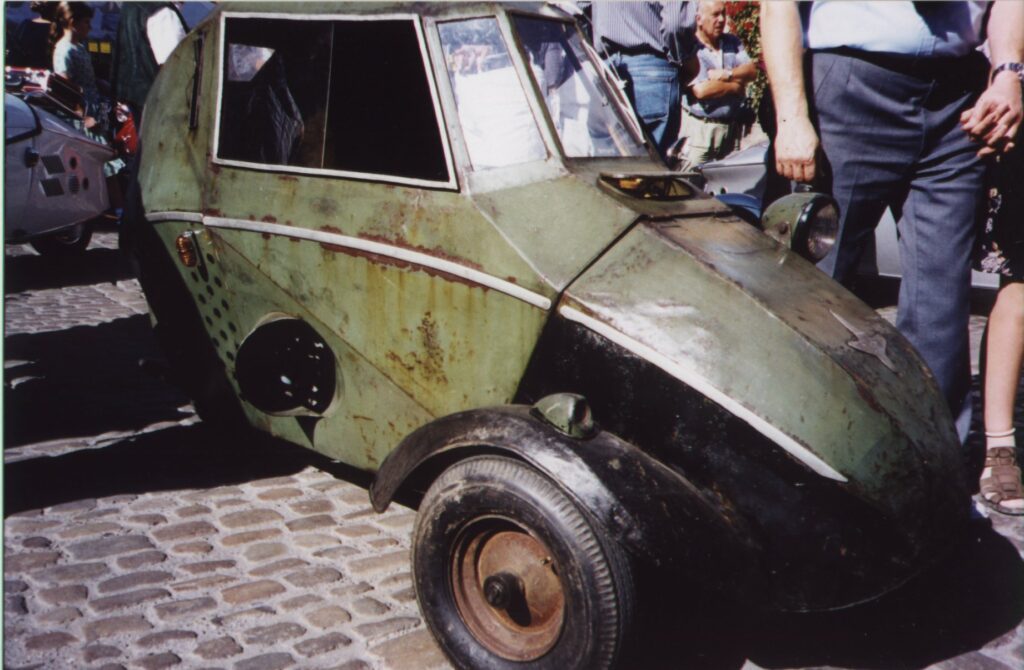Flitzer History
- Home
- Flitzer History
-
By: admin
- 0 Comments

Those who went to the Regensburg Rally in September 2000 were delighted to see a Fend Flitzer driving through the streets under its own power. Owned by Robert Eder from the town of Weilheim in Southern Germany, this car is in almost original condition. Built in 1951 and equipped with a 4.5hp Reidel engine, it successfully negotiated the route to Regensburg town centre where all the cars were displayed.
Fritz Fend was obviously proud of this rare example of his early work still in existence and posed for photographs before the assembled crowd. During the Rally, Fend was asked to give some talks about the development of the Flitzer, 175, and KR200. He politely avoided questions about production numbers and dates of detail changes concentrating instead on accounts of how the Messerschmitt was born out of the Flitzer.
Fend spoke of the time, just after the war, when the Americans were in control and Germany was governed Henry Morgentau who was chief of the Finance Ministry between the years 1944-1955 -. Germany was to be reduced to an agricultural state, deprived of the means for industrial production. As Fend put it: “We were simply to have a roof over our heads”. By 1946, the Americans perceived a greater threat to the East from the growing power of the Soviet block and the draconian de-industrialisation plan was gradually abandoned.
Fend set up a manufacturing operation in Rosenheim where he began to develop a vehicle that could be built in spite of technical restrictions. These vehicles gave mobility to many ex-military men who had suffered limb amputations. As a result the Association of German War-Wounded (VdK) noticed his work and this provided the support he needed via the Americans.
In.June 1948, the first Flitzer ran through the streets of Rosenheim and by September 1948 the prototype of the power driven Flitzer was created. In March 1950 the 2.5 h.p. Fichtel and Sachs engine was replaced by a 4.5. h.p. Riedel engine. This engine is almost egg shaped in construction and was first used in the famous ME262 Jet fighter-bomber. The small physical size allowed it to fit within the confines of the jet engine nacelle where it was used to start the turbine. It is fitted with a hand starting mechanism operated by a key inserted into the side of the engine. When used on the Flitzer, there is a mechanical linkage to a foot operated starter pedal located next to the drivers right foot. It can also be started by using the “key” always a source of amusement as it appears that the car is being wound up like a clockwork mouse! Reliability was convincingly demonstrated by a drive over the Grossglockner Pass. By December 1951 around 150 of the 4.5 h.p. Flitzers had been delivered, and the existing site in Rosenheim could not meet the heavy demand.
Fend searched for an alternative manufacturing site and eventually discovered Regensburg Steel and Metal Construction Company (R.S.M.) in Lilienthalstrasse, West Regensburg. There Fend worked on a larger version of the Flitzer capable of carrying two people. Unveiled in March 1953, to great public acclaim and with a F & S 175 engine, the KR 175 was born. The great Messerschmitt story had begun!
